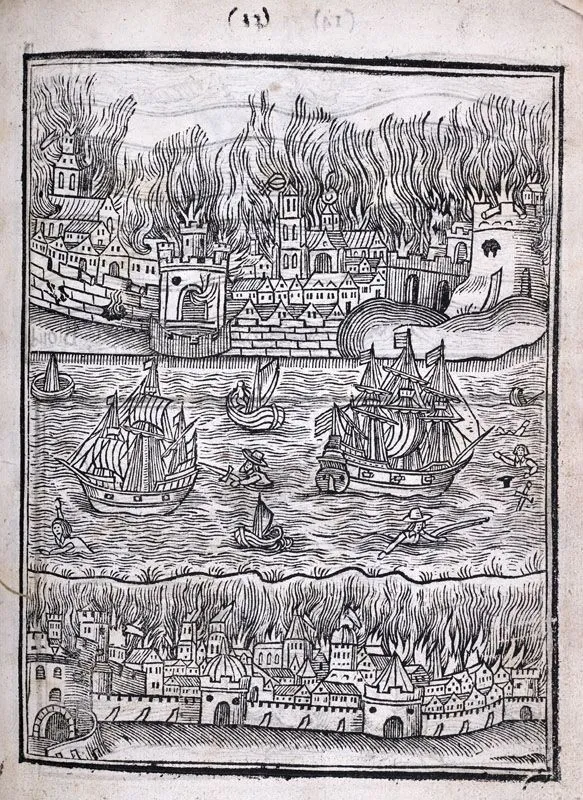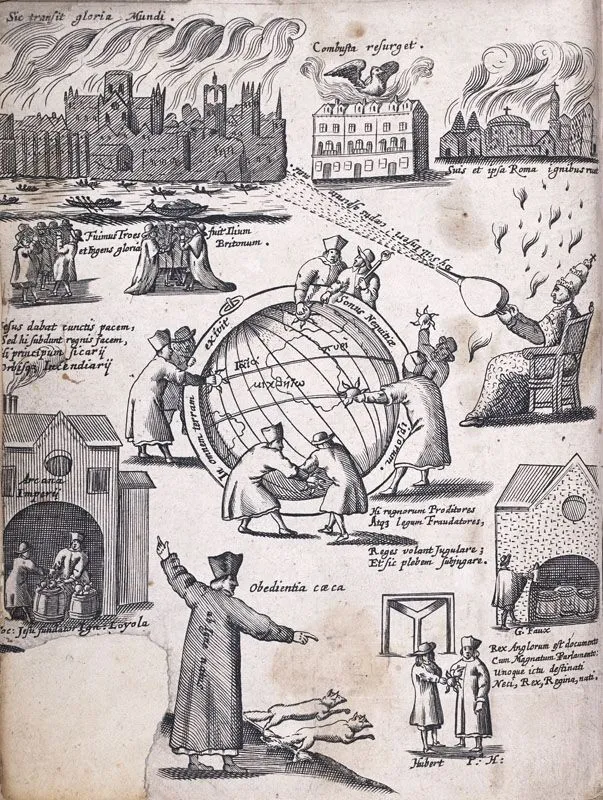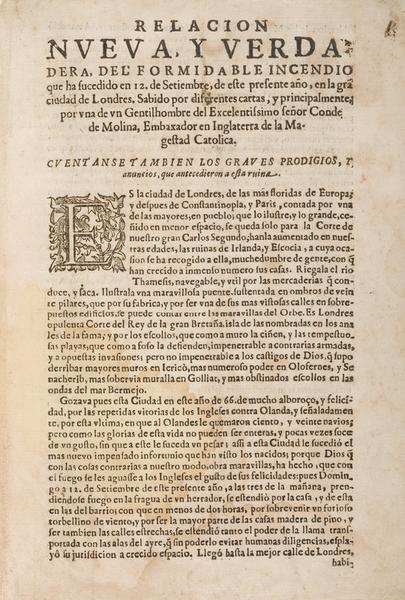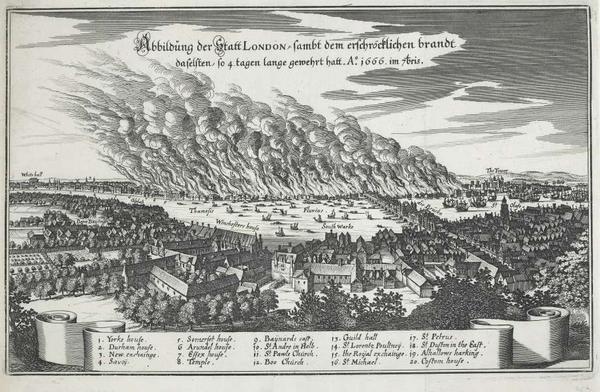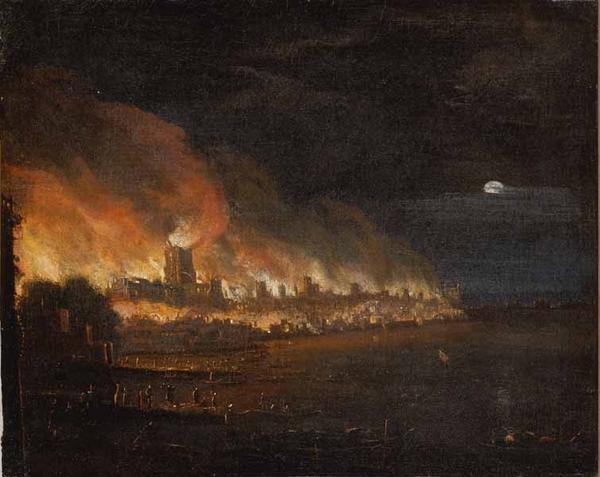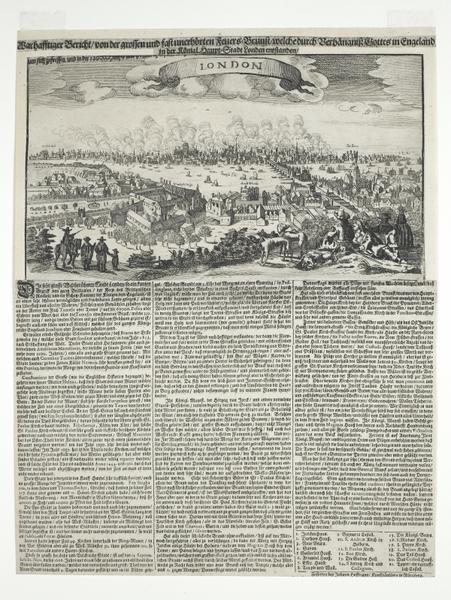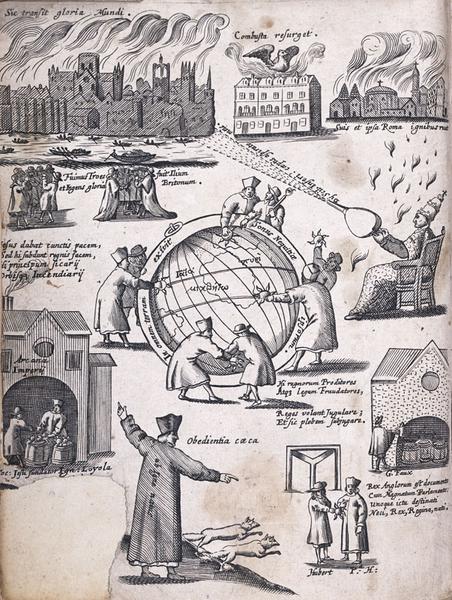A Spanish view of the Great Fire of London
When London burned in 1666, news spread across Europe. One of the earliest known international reports came from Valencia, Spain – from the other side of a deep religious divide.
City of London
1666

An 18th-century painting of the Great Fire of London, looking towards St Paul's Cathedral.
Fire from across the water
The pamphlet, which is part of our collection, is titled “New and true account of the formidable fire that occurred… in the great city of London”.
It was published in the same year of the fire, and although it contains some historical errors, it’s useful for showing us how the disaster was viewed in another part of Europe.
Hard as it is to admit, our understanding of world events is often influenced by our political and religious beliefs. Agreeing on a “true account” isn’t easy.
It was no different in the 17th century. And for this author, the fire was God’s punishment.
The Great Fire and “false religion”
In the 17th century, Spain was a Catholic country. England was Protestant. Prejudice against other religions existed in both countries.
So, while some English commentators blamed the 1666 Great Fire on Catholics, this Spanish report says the fire was a judgement from God.
London burned, the report says, because it was a Protestant city and deserved to be punished for the killing of Catholics.
It claims the destruction of St Paul’s Cathedral was due to the saint’s anger that the “false religion” – Protestantism – was being preached there:
“No doubt the great Paul… preferred to see the magnificent edifice sacrificed to the fire rather than left for the veneration of a heretic cult.”
“at the sight of a Catholic temple the fire acknowledged itself and was conquered”
Author unknown, 1666
What does it say about the fire’s impact?
The pamphlet also shows how a Spaniard saw Londoners’ way of life, which was now threatened by the fire.
London was a major European trading centre. The immense damage caused by the fire was important news in Europe, especially for merchants.
The author writes about the losses suffered by merchants and farmers, and how everyday activities in the city had been disrupted. They describe the presence of King Charles II and his brother, the Duke of York, during the fire.
The pamphlet also includes mentions of the firefighting systems that the city had in place. The author wasn’t impressed by the warning bells:
“The sound of the bells noisily warned the parishioners; but since these bells were not rung in Catholic churches, their only effect was to make a noise and not to act as a help.”
Was the Great Fire of London predicted?
The author claims that some supernatural events occurred before the fire as a warning.
It mentions a pyramid of fire raised from the sea three times in three days, and also the birth of a monster in London. This was a horrible beast with:
“the colour partly fiery and partly yellow, on the chest a human face, the legs of an ox, the feet of a man, the tail of a wolf, the breasts of a goat, the shoulders of a camel, a long neck, and instead of a head a tumour with horse ears.”
The author also claims that a Latin inscription was found in the ruins of a Puritan church. “When these letters shall be read,” it said, “woe on London, for they shall be read by the light of a fire.”
Surveying the damage
The report exaggerates the final damage of the fire. It says 140 churches and 55,000 homes were destroyed. In reality, it was 87 churches and 13,200 homes.
To further support the theory, the Spanish text refers to 8,000 deaths. We don’t know exactly how many people died in the Great Fire of London, but the available evidence suggests it was under 10 people.
The pamphlet also claims that the fire stopped when it reached the Catholic chapel at the Queen's residence in Somerset House, on the Strand.
This was taken by the Spaniards as a sign from God to show Catholicism was the true faith. In fact, the fire was halted further east, at the Temple.
The author describes the moment the fire reached the church: “At this very point the onrush of flames was arrested… at the sight of a Catholic temple the fire acknowledged itself and was conquered.”
The search for a cause
The Great Fire of London began in Thomas Farriner’s bakery on Pudding Lane in the City of London. It may have been caused by a spark from an oven, but we can’t be sure.
Some Londoners suspected it might have been caused by external enemies.
England was at war with France and the Netherlands, which would have raised people’s suspicions that this was a deliberate attack.
The Spanish pamphlet brings us a very different point of view. It shows someone witnessing destruction so extreme, they could only explain it as God’s anger:
“let those who have escaped from this punishment with their lives give their thanks to God; and (having recognised the true Roman Catholic Church) let them pray to God that he may spare them from a greater fire, namely, the fire of Hell.”
Research credit: Meriel Jeater, Curator
The translated text is from W.G. Bell’s book The Great Fire of London in 1666. The full pamphlet can be downloaded using the link above.
The pamphlet is part of the WG Bell Bequest in London Museum’s library. The collection specialises in the Great Plague and the Great Fire. It can be browsed here.




